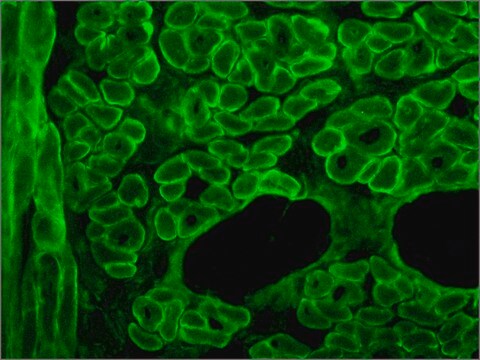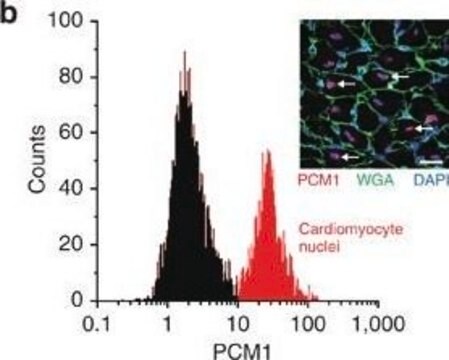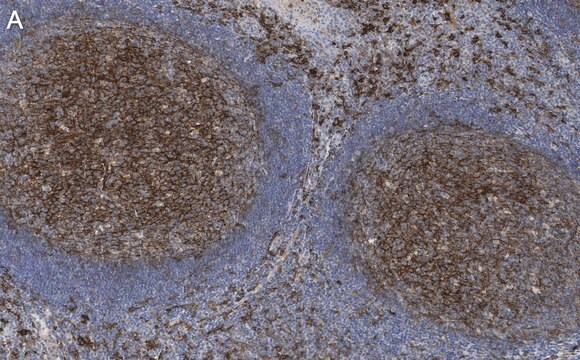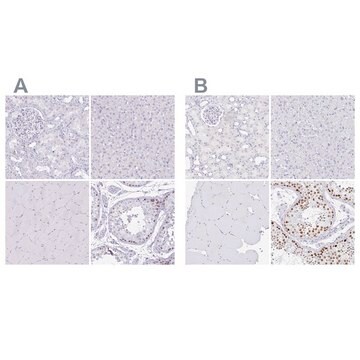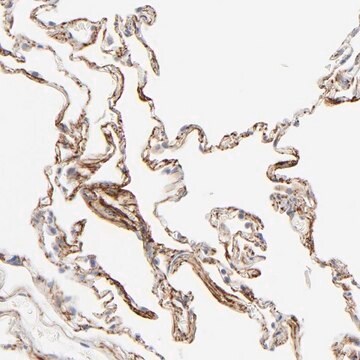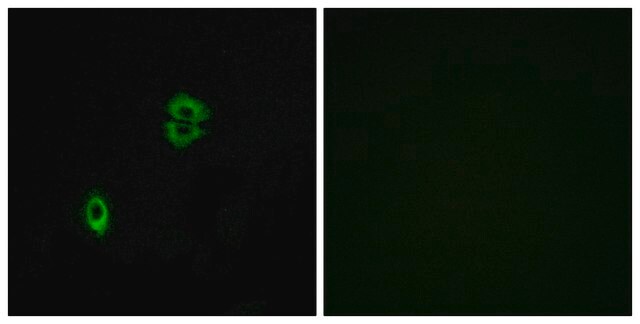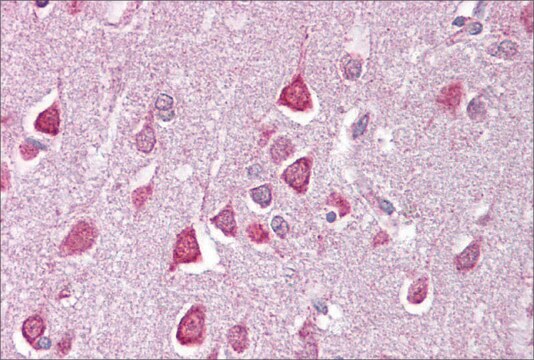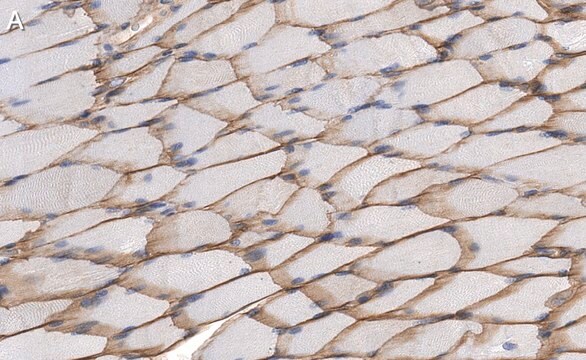MAB1692
Anti-Dystrophin Antibody, mid-rod, clone 6D3
culture supernatant, clone 6D3, Chemicon®
Sinônimo(s):
Anti-BMD, Anti-CMD3B, Anti-DXS142, Anti-DXS164, Anti-DXS206, Anti-DXS230, Anti-DXS239, Anti-DXS268, Anti-DXS269, Anti-DXS270, Anti-DXS272, Anti-MRX85
About This Item
Produtos recomendados
fonte biológica
mouse
Nível de qualidade
forma do anticorpo
culture supernatant
tipo de produto de anticorpo
primary antibodies
clone
6D3, monoclonal
reatividade de espécies
mouse, canine, human, rabbit, rat
fabricante/nome comercial
Chemicon®
técnica(s)
immunohistochemistry: suitable
western blot: suitable
Isotipo
IgG2a
nº de adesão NCBI
nº de adesão UniProt
Condições de expedição
dry ice
modificação pós-traducional do alvo
unmodified
Informações sobre genes
human ... DMD(1756)
Especificidade
STAINING PATTERN:Light microscopy: continuous rim of labeling at the periphery of muscle fibers.
E.M. gold: close to the cytoplasmic face of the plasma membrane.
Western blotting: strong double bands at approximately 400 kD plus metabolites of lower molecular mass.
Imunogênio
Aplicação
undiluted - 1:20. Not recommended for use on paraffin embedded tissue.
EM Gold (Light fixation with 2% formaldehyde + 0.001% glutaraldehyde for 1 hour. 2.3M sucrose used as cryoprotectant.): use undiluted. 90 minute incubation at 25°C.
Western blotting: use 1:100-1:250.
Optimal working dilutions must be determined by the end user.
Protocol for Immunohistochemical use of MAB1692
1) Freeze muscle blocks in isopentane chilled in liquid nitrogen.
2) Cut 4 μm to 10 μm sections and air dry on slides coated with 0.5% gelatin containing 0.05% chrome alum.
3) Slides may be stored at -70 °C wrapped in cling film until required. If stored sections are used, allow sections to equilibrate to room temperature before unwrapping and proceeding.
4) Apply a 50 μL aliquot of primary antibody to sections (unfixed). Incubate for 1 hour at room temperature or 37°C.
5) Wash sections 3 x 10 minutes in phosphate buffered saline.
6) Apply a 50 μL aliquot of labeled second antibody. Incubate for 60 minutes at 25°C.
7) Wash sections 3 x 10 minutes in phosphate buffered saline.
8) Mount fluorescent sections in aqueous mounting media or visualize peroxidase label (DAB). Dehydrate, clean and mount peroxidase labeled sections for permanent preparations.
Metabolism
Muscle Physiology
forma física
Armazenamento e estabilidade
Nota de análise
POSITIVE CONTROL: Snap frozen normal human or rat striated muscle.
Informações legais
Exoneração de responsabilidade
Não está encontrando o produto certo?
Experimente o nosso Ferramenta de seleção de produtos.
recomendado
Código de classe de armazenamento
12 - Non Combustible Liquids
Classe de risco de água (WGK)
WGK 2
Ponto de fulgor (°F)
Not applicable
Ponto de fulgor (°C)
Not applicable
Certificados de análise (COA)
Busque Certificados de análise (COA) digitando o Número do Lote do produto. Os números de lote e remessa podem ser encontrados no rótulo de um produto após a palavra “Lot” ou “Batch”.
Já possui este produto?
Encontre a documentação dos produtos que você adquiriu recentemente na biblioteca de documentos.
Nossa equipe de cientistas tem experiência em todas as áreas de pesquisa, incluindo Life Sciences, ciência de materiais, síntese química, cromatografia, química analítica e muitas outras.
Entre em contato com a assistência técnica